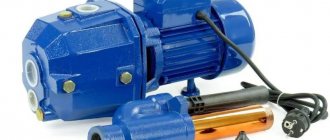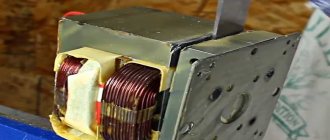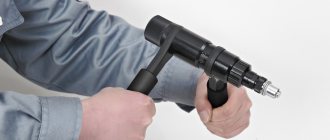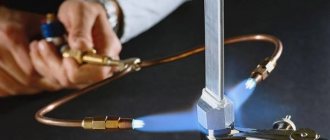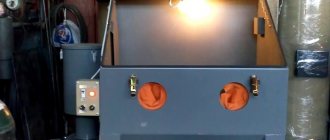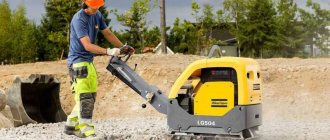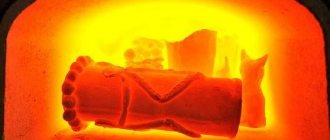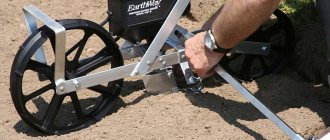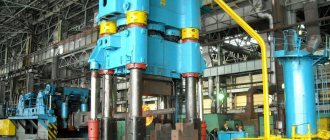For other uses, see Aspirator (disambiguation).
Aspirator
| Brass aspirator. The water inlet and outlet are located at the top and bottom, respectively; air intake on the side. | |
| Other names | Ejector Jet Pump, Injector/Ejector, Filter Pump, Venturi Pump |
| Uses | Vacuum creation, suction |
| Similar materials | Injector, vacuum pump |
Vacuum ejector
An ejector
is a type of vacuum pump that produces a vacuum through the Venturi effect.
In the ejector, the working fluid (liquid or gaseous) enters a tube through a jet nozzle, which first narrows and then expands across its cross-sectional area. The liquid leaving the jet flows at high speed, which due to Bernoulli's principle causes it to have low pressure, creating a vacuum. The outer tube then tapers into a mixing section where the working fluid mixes at high speed with the fluid drawn in by the vacuum, imparting enough velocity to eject, the tube then generally expands to reduce the ejection speed. flow allowing pressure to increase smoothly to external pressure.
The strength of the vacuum created depends on the speed and shape of the liquid jet and the shape of the constriction and mixing sections, but if a liquid is used as the working fluid, the strength of the vacuum created is limited by the vapor pressure into the liquid (for water, 3.2 kPa, 0.46 psi. inch or 32 mbar at 25 °C or 77 °F). However, if gas is used, this limitation does not exist.
If the source of the working fluid is not taken into account, vacuum ejectors can be significantly more compact than a self-contained vacuum pump of the same power.
How to make an ejector with your own hands
The principle of operation of the ejector is quite simple.
Very often in suburban areas there is no centralized water supply. Therefore, owners of private houses have to drill wells and organize a water supply system themselves.
However, pressure waters are often located at great depths. In this case, water extraction is complicated by the fact that a conventional pump for transporting water becomes insufficient. Therefore, very often an ejector is installed in such systems.
Operating principle of the ejector
The deeper the well, the more difficult it is to draw water from it. Therefore, a pump is used to move fluid through the pipeline.
However, with a well depth of more than 7 meters, a conventional such device will not be enough.
In this case, you can purchase a more powerful submersible device or supplement the system with an ejector, which will completely solve this problem.
The principle of operation of the ejector can be understood by studying the illustration presented.
An ejector pump is a device that moves the energy of one medium to another. Its operating principle is based on increasing the water pressure in the pipeline due to the rapid movement of liquid along a special branch.
This operating principle allows you to increase the capacity of an existing surface pumping station.
Thanks to this, it is possible to extract water from a well up to 40 meters deep.
To better understand how this device works, it is necessary to monitor its operation.
Operating principle of the ejector pump:
- Water flows through the nozzle into the ejector. In this case, the cross-sectional diameter of the nozzle is less than the diameter of the entrance to the ejector system.
- By passing through a narrow nozzle into a chamber with a larger diameter, the liquid is significantly accelerated. Thus, its pressure increases. An area of lower pressure is formed in the mixer chamber.
- Thanks to the rarefied atmosphere, liquid, which is under higher pressure, begins to be sucked into the chamber at tremendous speed.
This device is very useful for deep wells. After all, it allows you to quickly pump out water from the deepest holes.
Types of ejector pumps
An ejection pump is a useful thing on the farm, especially if there are deep wells on the site. To make it convenient to use them, you need to choose the pumping equipment option that suits you.
Ejectors have a fairly simple design. That is why they are easy to make with your own hands.
There are several types of ejector pumps, they are divided according to their operating principle and design:
- A steam ejector pump pumps out gaseous media from confined spaces. Thanks to this, a rarefied environment is maintained. Such ejectors are used quite often.
- A jet steam ejector sucks gases or water out of a confined space using the energy of steam jets. In this case, jets of steam exit the nozzle and force water to move, which exits the annular channel through the nozzle.
- A gas (or air) ejector compresses gases that are already in a rarefied environment using highly directed gases. This process occurs in a mixer, from which water flows into a diffuser, where it is slowed down and the voltage increases.
Ejector pumps have excellent performance properties
Ejectors also differ in their installation location:
- The built-in water ejector is installed inside or next to the pump. Thanks to this arrangement, the device takes up minimal space and is not afraid of dirt. In addition, such devices do not require the installation of additional filters. They are used for wells whose depth is no more than 10 meters. In addition, built-in ejectors make a lot of noise during operation and require a powerful pump.
- The device, which is called remote (or external), can be installed at a certain distance from the pump, but not more than 5 meters. They are often placed in the well itself.
All types of ejectors are suitable for use in a private home. They help to quickly pump water out of a well, despite its depth.
DIY making
It is quite possible to make ejectors with your own hands. Of course, such work requires a certain responsibility and care, but it is still quite doable.
The vacuum pump is especially popular. The drawings and diagram of such a device are extremely clear.
The ejector, of course, can be easily purchased ready-made. However, if you want to save a lot, it is better to do it yourself.
Making an ejector with your own hands:
- It is necessary to take the tee and attach the fitting to it so that the fitting pipe fits inside the tee and does not protrude from it. If the pipe is too long or short, this can be corrected. In the first case, it can be ground off, and in the second, a polymer tube can be extended.
- Now you need to work with the part that will be connected to the pump. To do this, an adapter is screwed at the top of the tee.
- At the bottom of the tee, in the part where the fitting is located, a bend in the shape of an angle is screwed on. It will connect to the recirculation part of the ejector.
- An angle-type adapter is also screwed into the side of the tee. It is attached to the pipe using a collet clamp.
All connections must be sealed with special tape.
Installation rules and first launch
After you assemble the ejector, it must be installed correctly. If you follow the instructions, it will be easy to do.
After all, the product itself has a very simple design. There are three outputs on the ejector.
Each of these outputs must have its own pipe connected.
First of all, the pipe is attached to the outlet that will draw water from the well. It is located on the side of the device.
A filter and check valve are mounted at the end of such a pipe.
The pipe used for sampling should be long, but it does not need to reach the very bottom of the well.
Before installing the pump, you should watch the training video
A pipe with a narrowed fitting is connected to the bottom of the ejector. This is the main line for water circulation.
The second end of the pipe is connected to the container. Water will be drawn from it to create a reverse flow. A third pipe is connected to the top of the ejector.
The other end is mounted on the pump.
How to start the station for the first time:
- Pour water into the ejector hole and turn off the valve that allows water to move from the pump through the water supply.
- Next, you need to turn off the pump for half a minute and then turn it on. Open the tap and release some of the air from the system.
- Repeat these steps until the water line fills the pipes with water.
- Turn on the pump, wait until the system is filled with water, and the pump will automatically turn off. Open the tap and wait until the pipes are empty and the pump turns on again.
If water does not flow, the system is not assembled correctly. In this case, you will have to find the problem and fix it. That is why the first launch must be carried out in the described way.
An ejector is needed for those who live in a private house and have a very deep well. Such a system will allow you to use a not very powerful pump as efficiently as possible.
Ejector for a pumping station: principle of operation, types, installation
An ejector is a device capable of transferring kinetic energy from one medium to another.
An ejector for a pumping station helps lift water from sources more than ten meters deep and is used to protect the engine during a sharp drop in water level.
You can buy the device in a store or make an ejector for a pumping station with your own hands.
Principle of operation
The ejector works on a fairly simple principle.
The water is recirculated at the bottom of the pipeline, thereby filling the lack of pressure in the suction pipeline.
The ejector pushes the water to the height from which the engine can draw it.
The water coming out of the tapering T-shaped pipe is poured into the mixer at high speed from the suction chamber. In the diffuser, the normal flow of water is mixed with the accelerated one and enters the pipeline.
The ejector solves the problem of low pressure
An ejector is installed in the part of the pipeline located between the well and the pump.
Part of the water flow that rises returns back to the well, and forms a constant recirculation on the way to the ejector.
Additional vacuum occurs in the pipeline, and less pump energy is spent on lifting the liquid.
The operation of the system is adjusted using a valve. Part of the water is supplied to the house, the rest continues to be recirculated in the ejector.
The pumping station starts up faster, energy consumption is reduced, and the installation of lower power equipment is required.
Connection
In the case of an internal ejector, if it is included in the design of the pump itself, installation of the system is not much different from the installation of a non-ejector pump. It is enough to simply connect the pipeline from the well to the suction inlet of the pump and arrange a pressure line with associated equipment in the form of a hydraulic accumulator and automation that will control the operation of the system.
For pumps with an internal ejector, in which it is fixed separately, as well as for systems with an external ejector, two additional stages are added:
- An additional pipe is laid for recirculation from the pressure line of the pumping station to the ejector inlet. The main pipe from it is connected to the pump suction.
- A pipe with a check valve and a coarse filter is connected to the ejector suction for drawing water from the well.
If necessary, a valve is installed in the recirculation line for adjustment. This is especially beneficial if the water level in the well is much higher than the pumping station is designed for. You can reduce the pressure into the ejector and thereby increase the pressure in the water supply system. Some models have a built-in valve for such a setting. Its placement and adjustment method are indicated in the equipment instructions.
Initial launch and further operation
It is recommended to perform the initial start-up of the pumping station according to the following scheme:
- Pour water into the pump through the special hole.
- Turn off the tap through which water flows from the pumping station to the water supply system.
- Turn on the pump for about 10-20 seconds and turn it off immediately.
- Open the tap and bleed some of the air from the system.
- Repeat the cycle of short-term pump on/off in combination with bleeding air until the pipes are filled with water.
- Turn on the pump again.
- Wait until the accumulator is filled and the pump automatically turns off.
- Open any water tap.
- Wait until the water flows out of the accumulator and the pump turns on automatically.
If water does not flow when starting up a system with an ejector, it is possible that air is somehow leaking into the pipes, or the initial filling with water was not performed correctly. It makes sense to check the presence and condition of the check valve. If it is not there, the water will simply pour into the well, and the pipes will remain empty.
These points should also be taken into account when using a pumping station with an ejector, which is started after long-term storage. It is best to check the check valve, the integrity of the pipes and the tightness of the connections immediately.
If an ejector is needed to improve the water pressure in the system, and not to increase the depth of water intake, you can use the homemade ejector model described above.
What is an ejector: device and operating principle of the pump
Let's figure out what an ejector is. It’s worth starting with the fact that it is an integral part of a pumping station designed for pumping water. What is its essence?
The main purpose is to help the pumping station. In such cases, when the water is at great depth, for example, at a depth of 7 meters, a conventional pump may not be able to supply water.
And then, to solve the problem of pumping water even from such a depth, an ejector is installed to help the pump. Thus, the problem is easily solved .
In other words, the device is used to increase the efficiency of the pumping station.
- Device Features
- Pump operating principle
- Main types of ejectors
- Built-in model
- Remote device
- Steam, steam jet and gas
- Vacuum devices
- Difference from injector
Of course, if the water is too deep, you will need to use a technique such as a powerful submersible pump.
Device Features
The ejector device is very simple; it can even be assembled manually from ordinary materials. The design of the device consists of the following parts:
- Diffuser;
- Offset node;
- Water suction chamber;
- Nozzle narrowed downwards.
Pump operating principle
The operation of the device is based on Bernoulli's law. When the speed of a certain flow increases, a field with a low level of pressure is created around it. In this regard, a discharge effect is created.
The liquid, passing through the nozzle, narrowed downward according to its design, gradually increases speed. After which the liquid, entering the mixer, creates low pressure in it.
Thus, the pressure of the liquid that enters the mixer through the water suction chamber increases significantly.
It is also worth noting that for the ejector to work properly, it must be installed on the pump so that some of the liquid that is lifted by the pump remains inside the device, or more precisely, the nozzle, constantly creating the necessary pressure . It is thanks to this operating principle that it is possible to maintain a constant accelerated flow. Using such a device can significantly save energy.
Main types of ejectors
Depending on the installation, ejectors may be different. They are usually divided into two main types: built-in and remote. The difference between these types is small, that is, they differ only in the installation location, however, this small difference may affect the operation of the pumping station . Both types have their own advantages and disadvantages .
Built-in, as you might guess from the name, is mounted directly into the pump housing, being its integral part.
Built-in model
The built-in ejector has its advantages:
- It is enough just to mount the pump itself without installing additional equipment, which saves space in the well.
- It is located inside, that is, it is protected from dirt getting inside the device, and this, in turn, allows you to save money on purchasing additional filters.
Among the disadvantages, we can note only low efficiency at great depths exceeding 10 meters.
However, the main purpose of built-in models is to use them for pumping water from shallow depths.
And one more nuance in defense of built-in devices: they provide powerful and uninterrupted water pressure . Therefore, they are often used for irrigation and other household needs.
Another minor drawback may be the high noise level of the pump, which is amplified by the noise of the water flow. It is customary to install such pumps outside a residential building.
Remote device
The remote, or external, device is mounted on a pumping station at a depth of at least 20 meters. And according to some experts, it is absolutely necessary to install the device at a distance of half a meter from the pump. That is, it can be placed directly in a well or brought to a water source.
Thus, noise from work will not be a problem for residents. However, there are some nuances here too. For example, to connect a pump to a source, a pipe is needed so that water can return to the device. The length of the pipe must correspond to the depth of the well.
In addition to the recirculation pipe, you also need a tank from which water will be drawn.
Steam, steam jet and gas
Steam ejectors are designed to pump gas out of confined spaces and to maintain air in a rarefied state.
Steam jet devices, unlike steam devices, use the energy of a steam jet. The operating principle is based on the fact that the steam flow coming out of the nozzle carries with it at high speed a flow passing through an annular channel around the nozzle. A similar station is used to pump water from ships.
An air or gas ejector is used in the gas industry. During operation of the device, the low-pressure gas environment is compressed; compression is achieved through high-pressure gas vapors.
Vacuum devices
The operation of vacuum ejectors is based on the Venturi effect. They are multi- and single-stage.
Compressed air enters the device and passes through the nozzle, and this leads to an increase in dynamic pressure and a decrease in static pressure, that is, a vacuum is created.
Thus, the compressed air
entering the ejector is mixed with the pumped air and exits through the muffler.
In multi-stage ejectors, unlike the first type, the vacuum is created not in one, but in several nozzles, which are located in the same row. Thus, the compressed air passes through the nozzles and exits the muffler. The advantage of the second type is that using the same volume of air provides greater productivity than single-stage ones.
Difference from injector
Both of these devices are jet devices, that is, for suctioning liquid and gaseous substances.
An ejector is a device in which kinetic energy is transferred from a working medium at high speed to a non-working, that is, passive, medium through their displacement.
An injector is a device in which gases and liquids are compressed.
The main difference between these devices is the method of transmitting energy to the passive medium. For example, in an injector the supply occurs due to pressure, and in an ejector the supply occurs due to the creation of a self-priming effect.
Choice: built-in or external?
Depending on the installation location, there are remote and built-in ejectors. There is no big difference in the design features of these devices, but the location of the ejector still affects in some way both the installation of the pumping station and its operation. So, built-in ejectors are usually placed inside the pump housing or in close proximity to it.
As a result, the ejector takes up minimal space and does not have to be installed separately; it is enough to carry out the usual installation of the pumping station or the pump itself. In addition, the ejector located in the housing is reliably protected from contamination. Vacuum and reverse water intake are carried out directly in the pump housing. There is no need to install additional filters to protect the ejector from clogging with sludge particles or sand.
A remote ejector for a pumping station is more difficult to install than an internal model, but this option creates a much less noise effect
However, it should be remembered that this model demonstrates maximum efficiency at shallow depths, up to 10 meters. Pumps with a built-in ejector are designed for such relatively shallow sources; their advantage is that they provide excellent incoming water pressure.
As a result, these characteristics are sufficient to use water not only for domestic needs, but also for irrigation or other economic operations. Another problem is the increased noise level, since the vibration of the operating pump is added to the sound effect of water passing through the ejector.
If you decide to install a pump with a built-in ejector, you will have to take special care of sound insulation. It is recommended to install pumps or pumping stations with a built-in ejector outside the house, for example, in a separate building or in a well caisson. The electric motor for a pump with an ejector must be more powerful than for a similar model without an ejector.
An external or external ejector is installed at a certain distance from the pump, and this distance can be quite significant: 20-40 meters, some experts even consider 50 meters acceptable. Thus, a remote ejector can be placed directly in a water source, for example, in a well.
The external ejector does not so much increase the pump’s performance as it is designed to increase the depth of water intake from the source, which can reach 20-45 m
Of course, the noise from the operation of an ejector installed deep underground will no longer disturb the residents of the house. However, this type of device must be connected to the system using a recirculation pipe through which the water will return to the ejector. The greater the installation depth of the device, the longer the pipe will have to be lowered into the well or well.
It is better to provide for the presence of another pipe in the well at the design stage of the device. Connecting a remote ejector also involves installing a separate storage tank from which water will be drawn for recirculation.
Such a tank allows you to reduce the load on the surface pump, saving some energy. It is worth noting that the operating efficiency of the external ejector is somewhat lower than that of models built into the pump, however, the ability to significantly increase the intake depth makes one come to terms with this drawback.
When using an external ejector, there is no need to place the pumping station directly near the water source. It can be installed in the basement of a residential building. The distance to the source can vary within 20-40 meters; this will not affect the performance of the pumping equipment.
DIY air ejector - Metalist's Handbook
Hello, dear readers of “San Samych”.
Today, at your request, I will tell you how to assemble a simple ejector for a pumping station on your own in order to provide additional meters of water lifting from the well and to protect the operation of the pumping station from possible dry running in the event that the water level in the well suddenly drops.
I wrote earlier about the connection diagram for such an ejector. The same article shows a sketch of this ejector. But how exactly to do it turned out to be unclear to many.
Let me make a reservation right away that in the process of writing this article I did not make this ejector. I don’t need it at the moment, but I can do it at any time, spending an hour and a half on it.
And yet I will start a little from afar so that there are as few questions as possible.
Names and symbols.
Having visited my wife’s parents in the Ulyanovsk region, I was surprised to find that salespeople in plumbing stores do not always understand what I am asking them for, although I did not experience such problems in St. Petersburg. Therefore, I would really like you and I to speak the same language and understand each other, especially in terms of names and designations related to plumbing.
In plumbing, it is customary to designate parts and threads on them with symbols, which, however, are understandable to anyone who speaks and writes in Russian.
The size or diameter of the thread is most often indicated in inches: ½, ¾, 1½. This also indicates that the threads on the parts are not metric, but conical - pipe.
The letters next to the thread designation indicate which thread it is: internal ( B ) or external ( H ).
For example, the short designation: ¾ H x ½ H angle means an adapter angle (or corner adapter), one end of which has a ¾ inch or 20 mm diameter male pipe thread and the other end has a ½ inch or 15 mm diameter internal pipe thread. Let me clarify once again, the letter “ B ” in this designation does not mean external thread ( external thread, there is external thread ), but only and only internal thread .
In some previous articles I have already mentioned symbols, abbreviations, and plastic pipes.
Let me remind you: MP - metal-plastic, PP - polypropylene, PVC - polyvinyl chloride, HDPE - low-density polyethylene.
So, if in the part designation there is a certain number with the abbreviation of the pipe material in place of the thread size, this means that this “tail” of the part is intended for connection with the specified type of pipe of the same diameter.
For example, an angle ½ N x 16MP is an angle at one end of which there is an external pipe thread with a diameter of ½ inch or 15 mm, while the other has a fitting and thread (in the case of threaded crimping) intended for connection to the angle of a metal-plastic pipe with a diameter of 16 mm.
If there are no markings, this means that this side of the part is intended for a non-threaded connection with, say, a garden hose of the specified diameter and this is most likely an ordinary fitting.
For example, adapter ¾ N x 12 .
Within the framework of this article, I would not like to go further into the jungle of conventions, because what I have told is already quite enough for our understanding, and we, I hope, will not be distracted by further explanations. However, I will try to express my thoughts clearly, while still explaining the bottlenecks in detail.
Parts and tools.
Actually, the ejector itself consists of only two, maximum three, parts. This is a tee (let it be ¾) and a fitting that needs to be somehow pushed inside the tee.
If the fitting is short, then a third part will be needed - a small vinyl chloride tube that matches the diameter of the fitting. If it is long, then it will have to be sharpened or cut.
I'll explain later why this is important.
But the ejector needs to be attached to the pipes, so the corresponding parts will need to be added to the ejector design. As an example, I will consider connecting to MP pipes, as the most common and easiest to install. If you use any others, you will need to make appropriate changes to the design.
So, from the details we will need:
- Tee ¾ V;
- Fitting ¾ N x 12 or less (¾ N x10, ¾ N x 8);
- Vinyl chloride tube, resp. diameter;
- Adapter ¾ N x 26MP;
- Angle ¾ N x 26 MP;
- Angle ¾ N x ½ B;
- Angle ½ N x 16 MP.
The last two corners can, in principle, be replaced with something else, the main thing is that the result is the turn we need with a transition to the pipe we need.
The tools you will need are ordinary plumbing wrenches, emery or a grinder for grinding the fitting, and any tool or device for straightening the ¾ thread of the fitting that we knock down during the grinding process (a die, a finishing screw or just a ¾ coupling). A vice is also desirable for convenience, but this is individual.
Making an ejector.
Most of all you will have to tinker with the fitting. It is necessary to grind off its hexagonal part, almost to nothing, making it into a cone, the base of which is slightly smaller in diameter than the external thread of the fitting.
In addition, you will have to shorten the threaded part of the fitting slightly, leaving a maximum of four threads.
Using a thread-cutting tool or coupling, you will need to correct the thread damaged by turning and cut it further into the resulting cone so that the threaded part of the fitting can be freely screwed into the coupling or tee from either side.
If everything worked out, then everything is much simpler. Now you just need to assemble the ejector.
We screw the fitting into the tee with the narrow part inwards until it stops, checking how much of the internal thread of the tee remains (there should be at least 4 threads left), and how far the edge of the outlet hole of the fitting extends beyond the border of the middle hole of the tee (should be 1-2 mm).
If there are not enough threads on the tee, grind off the threads on the fitting even more. If the outlet of the fitting is not long enough, then you will have to put a small piece of vinyl chloride pipe on it, or grind it off if it is too long.
After correcting the flaws, screw in the fitting completely, sealing the threads with any sealant.
The bottom corner will protrude slightly from the tee, but the four remaining threads are enough to reliably seal the connection.
All. The ejector is assembled.
The principle of operation of the ejector.
By supplying water through the recirculation line, the lack of pressure in the suction pipeline is compensated, and the pump begins to operate normally. But if that was all, then an ordinary tee would be enough, and there would be no need to “fence the garden” with a fitting. By the way, sometimes they do this.
What does the fitting built into the tee give us? By narrowing the flow of recirculating water, its speed increases. Two regions with a pressure difference are created.
One immediately behind the outlet of the fitting - an area of high pressure is used to compensate for the lack of pressure at the pump suction.
The second - in front of the outlet of the fitting - is an area of low pressure that facilitates the suction of water into the ejector.
Overall, the system becomes more efficient and requires less energy than if the tee were empty.
Therefore, by the way, it is better to look for a fitting with a smaller outlet hole. True, this rule does not apply indefinitely. But, to be honest, I wouldn’t like to go into the jungle of hydrodynamics.
For the same reason, I don’t want to explain why this ejector is not very efficient. I will only say that the volume of the mixing chamber is insufficient and its geometry is not respected. Anyone interested can easily find out why this is so.
The main thing is that this homemade ejector is guaranteed to work, pulling water to the missing 3-5 meters, and maybe more. And it's been verified.
Good luck to you! See you again on the pages of “San Samych”.
Ejector - what is it: principle of operation of ejector pumps, device, drawings
Ejector - what is it? This question often arises among owners of country houses and dachas in the process of arranging an autonomous water supply system.
The source of water entering such a system, as a rule, is a pre-drilled well or well, the liquid from which must not only be raised to the surface, but also transported through a pipeline.
To solve such problems, a whole technical complex is used, consisting of a pump, a set of sensors, filters and a water ejector, installed if liquid from the source needs to be pumped out from a depth of more than ten meters.
Water jet ejector with flange connections
In what cases is an ejector needed?
Before dealing with the question of what an ejector is, you should find out why a pumping station equipped with it is needed.
Essentially, an ejector (or ejector pump) is a device in which the energy of motion of one medium moving at high speed is transferred to another medium.
In what cases is an ejector needed?
Before dealing with the question of what an ejector is, you should find out why a pumping station equipped with it is needed. Essentially, an ejector (or ejector pump) is a device in which the energy of motion of one medium moving at high speed is transferred to another medium. Thus, the operating principle of an ejector pumping station is based on Bernoulli’s law: if a reduced pressure of one medium is created in a narrowing section of the pipeline, this will cause suction into the formed flow of another medium and its transfer from the suction point.
Everyone knows well: the greater the depth of the source, the harder it is to raise water from it to the surface. As a rule, if the depth of the source is more than seven meters, then a conventional surface pump has difficulty performing its functions. Of course, to solve this problem, you can use a more productive submersible pump, but it is better to go the other way and purchase an ejector for a surface-type pumping station, significantly improving the characteristics of the equipment used.
External ejector prepared for immersion into the well
By using a pumping station with an ejector, the liquid pressure in the main pipeline increases, while the energy of the fast flow of the liquid medium flowing through its separate branch is used. Ejectors, as a rule, work in conjunction with jet-type pumps - water-jet, liquid-mercury, steam-mercury and steam-oil.
Overview and operation of a pumping station with an external ejector
How the ejector works and how to make it yourself
The operating principle of the ejector is quite simple
Very often in suburban areas there is no centralized water supply. Therefore, owners of private houses have to drill wells and organize a water supply system themselves.
However, pressure waters are often located at great depths. In this case, water extraction is complicated by the fact that a conventional pump for transporting water becomes insufficient. Therefore, very often an ejector is installed in such systems.
San Samych
Hello, dear readers of “San Samych”. Today, at your request, I will tell you how to assemble a simple ejector for a pumping station on your own in order to provide additional meters of water lifting from the well and to protect the operation of the pumping station from possible dry running in the event that the water level in the well suddenly drops.
I wrote earlier about the connection diagram for such an ejector. The same article shows a sketch of this ejector. But how exactly to do it turned out to be unclear to many.
Let me make a reservation right away that in the process of writing this article I did not make this ejector. I don’t need it at the moment, but I can do it at any time, spending an hour and a half on it.
And yet I will start a little from afar so that there are as few questions as possible.
